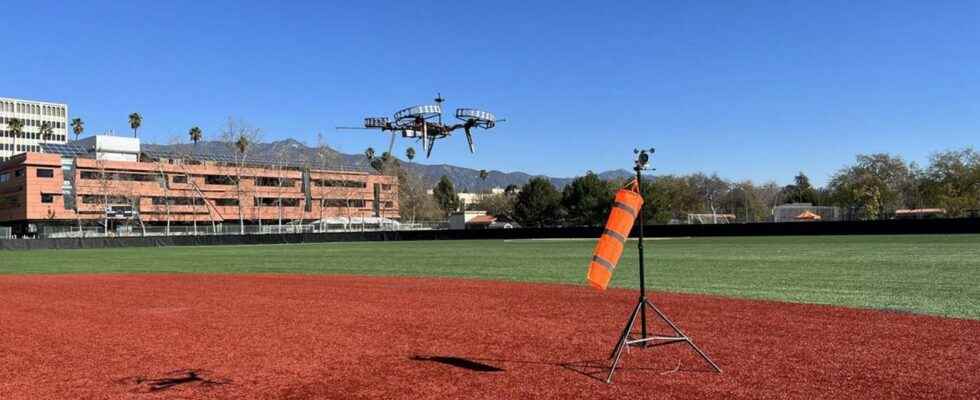You will also be interested
[EN VIDÉO] Deep learning and machine learning: what’s the difference? Deep learning and machine learning both use artificial intelligence.
The drone don’t like the rain too much, nor the strong gusts. They can get away with it in certain conditions by being tropicalized and flying at low speed, but at the expense of a puncture huge in battery capacity. And when there are too many windthey can neither take off nor evolve, like most of the aircraft. And above all, adapt a maneuver to counter a big kick. wind in real time is not their forte. Difficult to count on them to carry out tasks independently, such as parcel deliveries or rescue missions. It is therefore to push the autonomous drones a little further in their missions, that in the United States, a team of engineers from the California Institute of Technology (Caltech) has developed Neural Fly. It’s in the brain from the drone everything happens. Researchers have developed an artificial intelligence (AI) based on deep learning so that it can learn to deal with extreme gales in real time.
The Caltech research team has succeeded in creating an AI that allows the drone to learn to manage its piloting in real time in the face of powerful gusts of wind. © Caltech
A Raspberry Pi 4 as a brain
To avoid having to ship a monster of power and TB of data, Neural-Fly has integrated a pre-learning algorithm. The network of neurons is therefore already pre-trained and all you have to do is provide it with some key data so that it can adapt its behavior. So it’s a simple Raspberry Pi 4 having the size of a credit card which manages this neural network. By associating the deep learning and adaptive control, the aircraft learns to adapt its maneuvers according to the conditions weather report from his own flight experiences. Suffice to say that at the beginning, it tends to suffer more than to counter the wind, but it works.
In the end, the wind tunnel experiment demonstrated that after 12 minutes of flight, the autonomous quadcopter drones equipped with Neural-Fly were able to adapt to powerful gusts of wind of up to 44 km/h. They even improve their trajectory as a result. As a result, the autonomy remains very correct with trajectories 2.5 to 4 times shorter than those of the best drones of their kind. The other advantage is that this learning can benefit everyone else. drone by sharing it.
Do you want to access Futura without being interrupted by advertising?
Discover our online subscriptions and browse without ads! At this moment, the Mag Futura is offered for a 3-month subscription to the subscription “I participate in the life of Futura”!
What is Mag Futura?
- Our first paper journal of more than 200 pages to make science accessible to as many people as possible
- A dive into the heart of 4 scientific themes that will mark 2022, from the Earth to the Moon
*Mag Futura is sent after the third month of registration.
Interested in what you just read?

